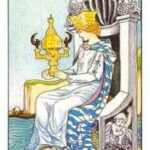 Creative works which make such powerful impressions that we never forget them hold valuable lessons because they always depict the themes of our soul’s journey, usually in symbols that become deeply meaningful to us. This can be true of something as simple as a folk song or as complex as a symphony.
Creative works which make such powerful impressions that we never forget them hold valuable lessons because they always depict the themes of our soul’s journey, usually in symbols that become deeply meaningful to us. This can be true of something as simple as a folk song or as complex as a symphony.
In the early years of our marriage my husband and I saw the film Blume in Love, starring George Segal and Susan Anspach. As we used to say in the 70’s, it “blew my mind!” There on the screen was a couple I could identify with. Blume was a successful young attorney blithely immersed in his work. Nina was a sensitive, serious-minded, idealistic social worker who sought inner peace and wanted to save the world.
While these two loved each other very much, both were self-absorbed and neither had a clue about the other’s inner reality. Nina’s discovery of Blume in their bed with his secretary resulted in their divorce and initiated a painful maturing process in which Blume came to see Nina’s significance as an individual in her own right, and Nina began to empower her true self while softening and forgiving Blume for being human.
Although the plot details were different, this romantic comedy portrayed a variation on our theme and depicted the essential challenge of every couple in an intimate partnership: to learn how to love. As a shockingly innocent and ignorant product of 1950’s and 60’s social conditioning, I was finally getting it that marriage is not a happily-ever-after instant fix involving two separate individuals whose roles and feelings will never change, but a container for soul-making. Every committed relationship is, in fact, a crucible in which two souls are melted down, refined and transformed in the evolutionary fires of change.
Blume in Love showed me that both partners will make sacrifices, suffer, be tempted, and make mistakes. And if love is to grow and last, each will need to understand that the other has equal merit and deserves equal rights and respect. This is how we learn to love.
The film’s ending in which Blume and Nina are reconciled in Venice’s Piazza San Marco taught me another archetypal truth: In a relationship that survives this ordeal, both partners can experience a revitalizing new birth. Notice how this theme is symbolized by Nina’s pregnancy in the image above.
In the years since I first saw this film, I’ve had many dreams about being pregnant. Although I rarely understood them fully at the time, in retrospect I see that they signaled gestating new life of some kind that would soon emerge into my consciousness. Blume in Love made a powerful impact on me and the Self adopted its symbolism to advance my consciousness.
An earlier version of this post was originally published in January of 2012. Synchronistically, as I was writing it, my editor who was helping me prepare my book Healing the Sacred Divide for publication, sent me an e-mail containing the following quote by Adyashanti (from Emptiness Dancing). It’s a very apt ending for these musings about love and relationships:
“Most relationships start out as unconscious relationships. When the light of awakeness comes to shine inside of that relationship, the unconsciousness within it is going to be revealed. It’s very important not to spiritualize it when it gets revealed. Some people want to spiritualize their relationship instead of making it conscious. They want to make it into a spiritualized fantasy in which their partner meets all their spiritual ideas about what a relationship could be. They think they know what it’s supposed to be like, what it could be like, where it’s going to go.
“When you ease back from that, you return to something that’s very intimate and innocent, where you are finally willing to tell the truth, not to hide, not to force consciousness into some relationship agenda, but to simply let it emerge. Then you never know what it will be like at any moment — how consciousness, awakeness, and love are going to want to emerge.”
What books and movies fascinate you? How have they helped love emerge?
Jean Raffa’s The Bridge to Wholeness and Dream Theatres of the Soul are at Amazon. E-book versions are also at Kobo, Barnes And Noble and Smashwords. Healing the Sacred Divide can be found at Amazon and Larson Publications, Inc. Her new book, The Soul’s Twins, will be launched next year.




14 Responses
I’ve never seen that movie, but the insights you share are certainly ones I’m now intimately familiar with. (And I adore Adyashanti). I can’t recall any particular books or movies in direct response to your question BUT … last night I watched a movie that moved me to tears with its poignancy in processing grief and how relationships don’t have to end after someone’s death: “A Rumor of Angels”.
Thank you, Darla. That sounds like a movie I’d like. I’ll look for it on Netflix.
Hi — thinking of you as I saw Dorianne this weekend. Do you have a personal email? xxBetsy
Betsy Holleman Burke betsyholleman@aol.com
>
Hi Betsy, what a lovely surprise to hear from you. Thanks for including your email address. I’ll send you a note!
Dear Jeanie, I haven’t watched the film you mention, nonetheless I agree, love relationships are without question potential containers for soul making and I would add close friendships can be too. I’ll take a look on YouTube where no doubt I’ll come across some clips of Blume in Love. Oh, it’s great when we watch (or read) a universal “love” story and resonate deeply as similar, synchronistic threads in our personal lives and those onscreen, begin to entwine.
Ever since I came across the 16th century alchemical treatise, the Rosarium Philosophorum, (thankfully Jung and other post Jungians have written at length about them!) I have found the different stages of the illustrated woodcuts most helpful when exploring relationships with my lovers and friends (Above) at the same time as exploring my relationship to Self (Below). Also I love the fact that there are little or no words either to describe each woodcut!
Re: films. One of my favourite films on the theme of “Love” has always been “Magnolia” … not a standard love story by any stretch of the imagination, however, it’s deeply archetypal beneath its surface where there is much to learn about the many faces of “Love”. A film that I can watch again and again and each time I do, I find something entirely new about the beauty and truth of love. Many thanks for this thought-provoking post! Warm autumnal blessings, Deborah.
Hi Deborah, I love that you referenced the Rosarium Philosophorum in your comment. Yes, Jungians find great value and meaning for the soul’s development in the old alchemical manuscripts. I’ve included an image from one of the most famous, Splendor Solis, in my new book. It’s the one where the sun and moon first meet. Solar and lunar energies are the metaphors I use for the masculine and feminine principles in everyone. And yes, the image speaks for itself.
I don’t know the film “Magnolia.” I’ll look for it. I assume you’re not talking about “Steel Magnolias,” which was a unique kind of love story too. Wishing you warm autumnal blessings too, Jeanie
I also think of marriage as a container for soul-making not a finished product. We used to speak of marriage as a spiritual path as in Karma Yoga or Bhakti Yoga or Jnana Yoga–and Partnership Yoga. I didn’t know it would continue after Vic died, but it did. The Adyashanti quote is wonderful.
The summer after Vic and I married in 1968, we spent a month in CA doing psychodrama and bioenergetics and other kinds of soul searching work. We were already studying Jung then, so this felt like taking the lab. In 1969, we returned to CA for a year of depth psychological work–sometimes a little free-wheeling, but always pointed toward learning to stop hiding and root around until we could find and tell the truth. It involved growing trust. Our first meeting brought an intuition of “that’s him” for me, but then came the work. Music mattered more to me then than any book or movie about love–and it meant we could dance! Leonard Cohen, Buffy St. Marie, and more.
Aaaaah, your stories about your early days with Vic bring back so many memories….Fred and I were too busy with school and work in the late 60’s to enjoy the psychological and spiritual richness of that time. And then Fred became an economics professor and I became a stay-at-home mother…and we became too busy with all that to go very deep into ourselves or our relationship. That only began to start around midlife for us.
But we also loved the music and often played and sang together: him on guitar, me on my baritone uke. Joan Baez, Buffy St. Marie, Peter Paul and Mary, Ian and Sylvia (we liked to think we sounded as good as them when we sang Circle Game), Leonard Cohen….we covered them all! Poorly, but who cares. 🙂
Dear and divine Jean , your visit to my Blogs are like a whispers of Fragrant Breeze . your New blog design has a Zen content very silently and these two rings speak volumes about your life journey as a beautiful Human as well as with more Beautiful Soul .
One Time designed a Mirror like this , our family bussiness is Furniture and Decorative accessories , working with designers and many stores since 1977 till now in USA ,Been to USA several Times .
These rings symbolizes Urge to unite with soul partner , merge the boundaries of Ego amd Emerge as wholeness for both rings as connected as well Individual.
Your Post is fine wisdom ….. will read again to drink the Cup of Wisdom you share .
my regards for all Inspiration you shared with me , I learned computer in 2010 and ……..
love all.
ram.
Dear Ram, Thank you for your kind words and observations about the two rings, or merging circles which create a almond-shaped mandorla. This symbol means the same thing to me as it does to you: the merging of opposites — especially ego and Self, masculine and feminine, self and other — and the holy creative space they make when they learn to understand and communicate with one another. Creating this kind of relationship within myself and with others has been the pressing theme of my life.I’m so grateful I’ve had the opportunity to share my vision of inner and outer partnership between opposites with others here on my blog and in my books.
Thank you so much for writing,
love all,
Jeanie
please read this post …. will like to have your comments ,
https://ram0singhal.wordpress.com/2020/04/30/sacred-gift-of-feminine-mystique/
regards
ram
If you’ll send me your email address, I’ll respond there. 🙂
you are kind ….. my email ramownzero@gmail.com , thanks
ramownzero@gmail.com thanks and regards